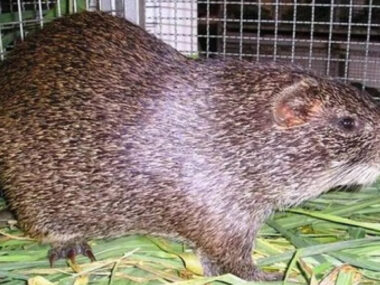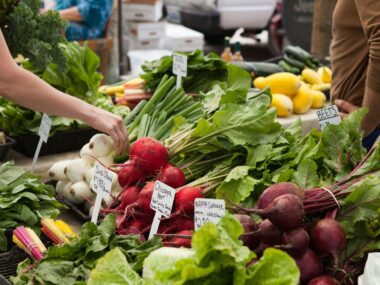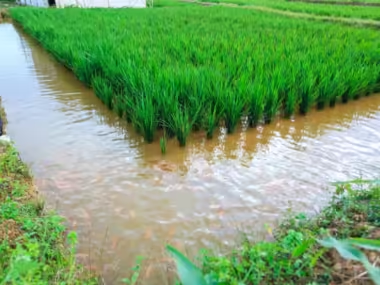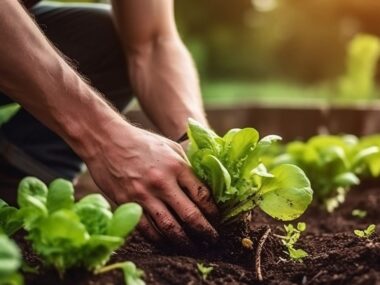Overview of Rice
Rice (Oryza sativa) is one of the most important cereal grains and a staple food for more than
half of the world’s population. It is particularly well-suited to regions with abundant rainfall, as it requires significant water for cultivation. Rice cultivation dates back thousands of years and remains a crucial agricultural activity across Asia, Africa, and parts of the Americas.

Benefits of Rice Cultivation
- High Yield Potential: Rice fields can produce large quantities of grain, providing substantial food resources.
- Economic Value: Rice is a major export commodity for many countries, contributing significantly to their GDP.
- Nutritional Importance: Rice is a primary source of energy, providing carbohydrates, vitamins, and minerals.
- Cultural Significance: Rice holds deep cultural and traditional importance in many societies.
Types of Rice
- Indica: Long-grain rice, common in tropical regions, known for its fluffy texture.
- Japonica: Short-grain rice, grown in temperate regions, with a stickier texture.
- Aromatic Varieties: Includes types like Basmati and Jasmine, known for their unique fragrance and flavor.
- Glutinous Rice: Also known as sticky rice, used in many Asian desserts and dishes.
Climate and Soil Requirements
- Climate: Warm, humid conditions are ideal for rice. It thrives in areas with temperatures between 20°C and 35°C.
- Rainfall: Rice requires substantial water, typically 1,000-2,000 mm of rainfall during the growing season.
- Soil: Prefers clayey, loamy soils that can retain water. Proper soil preparation includes plowing and leveling to ensure even water distribution.
Stages of Rice Cultivation
- Land Preparation: Involves plowing, harrowing, and leveling the field to create a smooth surface for water management.
- Seed Selection and Treatment: Use high-quality, disease-resistant seeds. Seed treatment may include soaking and pre-germination.
- Sowing Methods:
- Direct Seeding: Seeds are sown directly into the field.
- Transplanting: Seedlings are grown in nurseries and then transplanted to the field.
- Water Management: Flooding the fields is essential, especially during the early stages. Maintain a consistent water level of about 5-10 cm.
- Fertilization: Apply nitrogen, phosphorus, and potassium fertilizers. The timing and method of application are crucial for optimal growth.
- Weed Control: Use manual weeding, herbicides, or integrated pest management (IPM) practices to control weed growth.
- Pest and Disease Management: Monitor and manage common pests like stem borers, leafhoppers, and diseases such as rice blast and sheath blight.
- Harvesting: Typically occurs 120-150 days after planting, depending on the variety. Harvest when grains are fully mature and golden.
- Post-Harvest Processing: Involves threshing, drying, milling, and storage to ensure the rice is ready for market and consumption.
Water Management in Rice Cultivation
Effective water management is crucial for rice cultivation:
- Field Preparation: Ensure fields are well-leveled to maintain uniform water distribution.
- Irrigation Systems: Use canal irrigation, tube wells, or rainfall harvesting to manage water supply.
- Alternate Wetting and Drying (AWD): A water-saving technique that involves periodic drying of the field to reduce water usage without affecting yield.
Fertilization Practices
Balanced fertilization is key to maximizing rice yield:
- Nitrogen (N): Essential for plant growth, applied in split doses throughout the growing season.
- Phosphorus (P): Important for root development, typically applied before planting.
- Potassium (K): Enhances disease resistance and overall plant health.
Common Pests and Diseases
- Stem Borers: Larvae bore into the stem, causing significant damage.
- Control: Use pheromone traps, biological agents like Trichogrammatid, and resistant varieties.
- Rice Blast: A fungal disease that affects leaves, stems, and panicles.
- Control: Use fungicides, resistant varieties, and proper field hygiene.
- Brown Planthopper: A major pest that causes hopper burn and transmits viruses.
- Control: Implement IPM practices, use resistant varieties, and avoid over-fertilization.
Harvesting and Post-Harvest Practices
- Timing: Harvest when 80-90% of the grains are mature and golden.
- Methods: Use manual or mechanical harvesting methods.
- Threshing: Separate grains from the stalks using traditional or mechanized methods.
- Drying: Reduce moisture content to 14% for safe storage.
- Milling: Remove husk and bran to produce polished rice.
- Storage: Store in a cool, dry place to prevent pest infestation and spoilage.
Sustainable Rice Cultivation Practices
- System of Rice Intensification (SRI): A method that increases yield with fewer inputs by altering planting density, water management, and soil conditions.
- Integrated Pest Management (IPM): Combines biological, physical, and chemical methods to control pests sustainably.
- Organic Farming: Avoids synthetic chemicals, using organic fertilizers and pest control methods.
Innovations in Rice Farming
- High-Yielding Varieties (HYVs): Developed to increase productivity and resist diseases.
- Genetically Modified (GM) Rice: Engineered for traits like pest resistance and improved nutritional content.
- Precision Agriculture: Uses technology like drones and satellite imagery for efficient field monitoring and management.
- Direct-Seeded Rice (DSR): A method that reduces labor and water usage compared to traditional transplanting.
Economic Importance of Rice
- Global Trade: Major exporting countries include India, Thailand, Vietnam, and the USA. Importing countries include China, Nigeria, and the Philippines.
- Employment: Provides livelihoods for millions of farmers and workers in related industries.
- Food Security: Essential for the food security of many developing nations.
Environmental Considerations
- Water Use Efficiency: Implement practices like AWD to conserve water.
- Soil Health: Use crop rotation and organic amendments to maintain soil fertility.
- Climate Change Adaptation: Develop and adopt resilient rice varieties and farming practices to cope with changing climate conditions.
Challenges in Rice Cultivation
- Climate Variability: Unpredictable weather patterns can affect water availability and crop health.
- Pest and Disease Pressure: Requires constant monitoring and management.
- Labor Shortages: Mechanization and improved labor practices are needed to address this issue.
- Market Fluctuations: Prices can be volatile, impacting farmer income.
Conclusion
Rice cultivation during the rainy season presents a unique opportunity to leverage natural water resources for optimal growth. By understanding the requirements, best practices, and challenges associated with rice farming, farmers can enhance productivity, ensure food security, and contribute to the global rice supply. Sustainable practices and technological innovations will play a crucial role in meeting the future demands of rice production while preserving environmental health.










